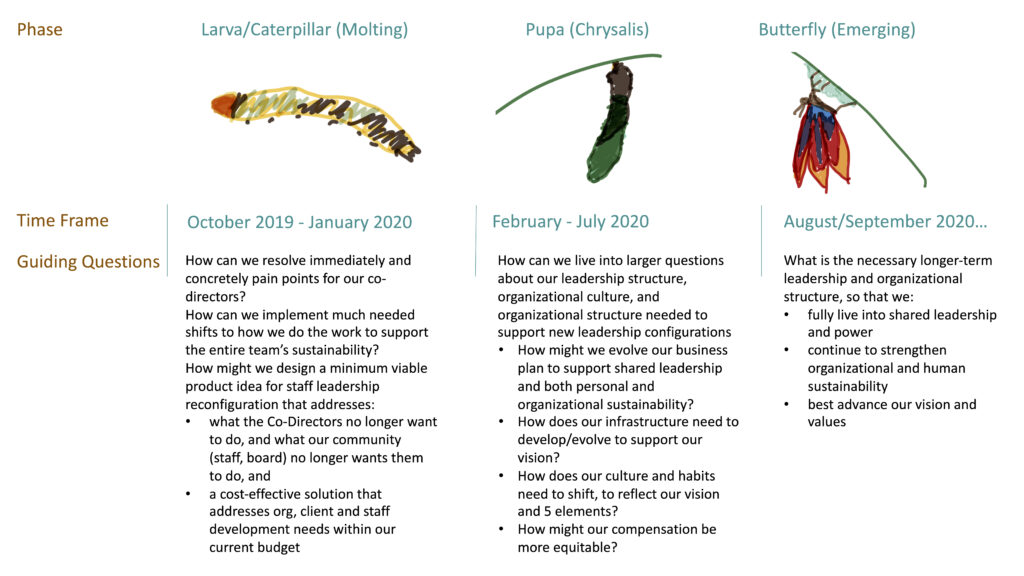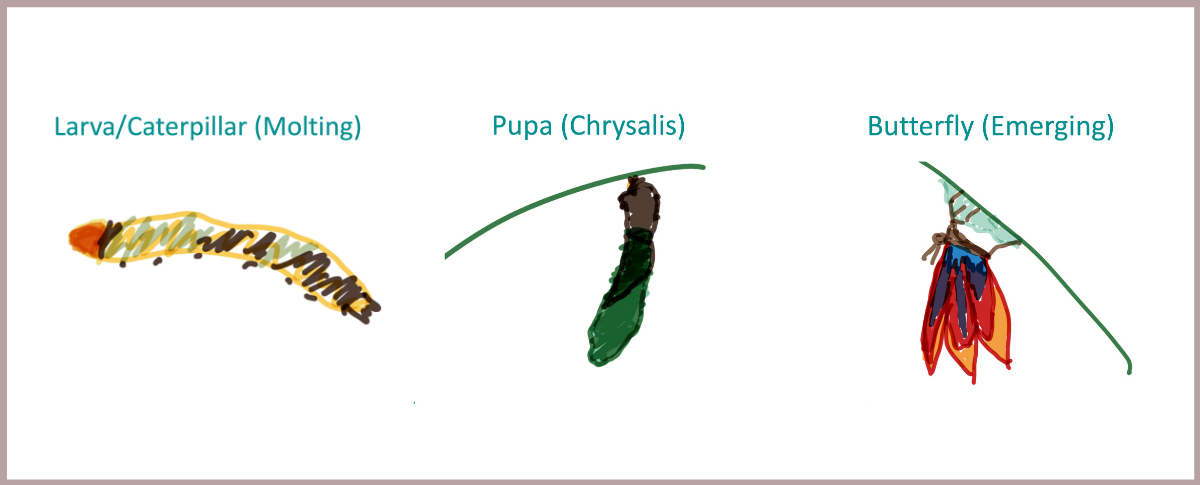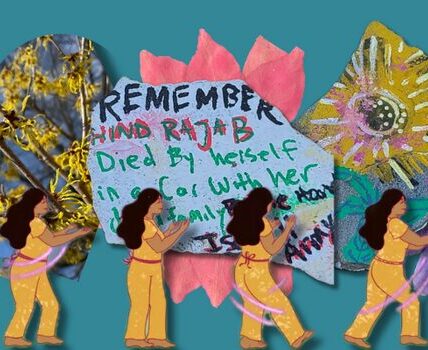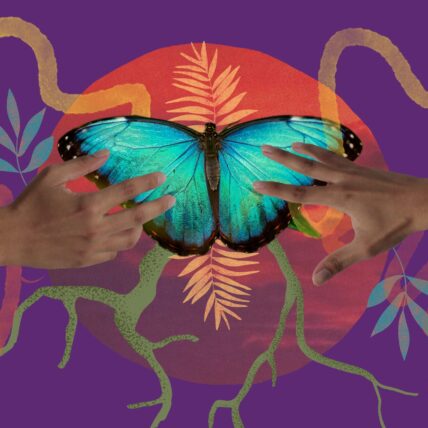Yesterday I was clever, so I wanted to change the world. Today I am wise, so I am changing myself.
Rumi
In a year filled with so much fear, conflict, violence, and inequities, it is easy to lose sight of our collective future of a world filled with love, dignity, and justice, one in which all beings thrive, including the earth of which we are only one facet. At Change Elemental, we have been riding the waves of grief, rage, stubborn determination, and brief moments of celebration along with you.
We have also been focused internally on deepening our shared leadership practices and living ever more fully into equity and liberation. Like you, we are exhausted, depleted, in deep need of rest and renewal, and too we are clearer than ever that how we move forward, what we do now, and what we do next must be about prefiguring the world we want. As fall makes way to winter, we are taking a little time to move into reflection and access our individual and collective knowing and wisdom about how we practice leadership in that direction.
The Journey
The journey of shared leadership at Change Elemental did not begin in 2020, or even in 2019, it started when the organization (then MAG) embarked on a codirector leadership model with two queer women of color leading the organization in 2015. Elissa Sloan Perry and Susan Misra were clear from that moment that their intention was to shift toward a culture of shared leadership beyond two people sharing the responsibilities and power of the “top” role. They spent five years leading the organization together and deepening our practices of five elements of transformation (complex systems change, deep equity, inner work, multiple ways of knowing, and shared leadership—power/leaderful ecosystems). In 2011 prior to either of them working for the organization, Susan and Elissa worked on a shared leadership project within the “Strengthening Organizations to Mobilize California” initiative with Mike Allison. The three consultants shared their learnings from that experience in the Nonprofit Quarterly article: “Doing More with More: Putting Shared Leadership into Practice”—which describes what conditions and practices are needed to support shared leadership—and set the course for their eventual codirectorship four years later.
As they moved into these new roles and began leading together in an organizational context, Elissa and Susan shared their learning in a number of venues and most consistently on our blog. In “Reflections on Shared Leadership,” written more than a year into their codirectorship, they identify five key lessons for effective shared leadership; and in “Two Years In…Notes on Equity and Shared Leadership at MAG” they outline the need for rigorous attention to the internal alignment of values and practice to create the conditions for love, dignity, and justice both within the organization as well as in our work with partners, clients, and collaborators. As they point out, “This is an ongoing journey with no end.”
Reconfiguration
And now, three years after outlining the need for rigorous attention to internal alignment, we are emerging from an intensive leadership reconfiguration process that has created radically different ways of working and being at Change Elemental.
The process was precipitated by a number of circumstances and recognitions. To name a few:
- Elissa and Susan had made a 3-5 year commitment to their codirector experiment (which ended in 2020).
- Elissa shared with the governance team in August of 2018 that she wanted her role to feel completely different by August of 2020, even if that meant stepping out of the CoDirector role.
- The codirector approach was of enormous benefit both to Elissa and Susan as leaders and to the organization overall. We were able to make progress toward both human sustainability and mission sustainability while maintaining fiscal sustainability; implement a number of policy and procedural changes; refine and deepen our relationships and purpose in the field of social and racial justice; and articulate and develop practices for advancing five elements of transformation toward justice.
- Codirectorship doesn’t solve for a number of challenges that leaders and organizations face—in particular, the untenable amount of energy and effort demanded of leaders doing social justice work. While the burnout rate was slowed significantly, it was still an issue.
Shifting to a codirectorship model cannot by itself advance more expansive manifestations of shared leadership, ones in which power is cultivated and shared in ways that prefigure the future we envision. Coming together as a focused team of staff and governance team representatives, we acknowledged that something different was needed, something that could further distribution of leadership, power, and responsibility, and something that could support Change Elemental in advancing its core strategies as well as increase our capacity to advance equitable systems change in the field more broadly.
The following diagram and metaphor are what we designed to guide the reconfiguration process.

Molting (or the larva stage)
We called the first phase of the learning and ideation process the molting or larva stage. From October of 2019 through January of 2020, with the facilitation of Viveka Chen, we focused on the immediate pain points of CoDirector exhaustion, staff overwork, and our desires to effectively weave together team development and our current client and partner commitments. The process began with molting, attending to what we needed to let go of, the skin we needed to shed. Simultaneously, staff began to imagine and articulate the ways and areas in which they’d like to try moving more fully into their leadership.
Chrysalis (or the pupa stage)
In February of 2020 we moved into phase two of the learning and ideation process, into what we called Chrysalis. Around the same time, Susan decided to leave her role and pursue projects outside of Change Elemental in addition to continuing to partner with us. In moving into Chrysalis, it was our intention that, much like a physical chrysalis, this structure would be a temporary holding and a space to grow up into something different—a way of being and of doing our work that would be new for us. The Chrysalis materialized into a more expanded leadership body, with Elissa remaining in her CoDirector role, Mark Leach stepping in as Interim CoDirector, and three additional consulting staff (Alison Lin, Aja Couchois Duncan, and Natalie Bamdad) increasingly taking on responsibilities previously held by the CoDirectors.
Alison developed some light structures to enable us to stay in regular conversation without it being too cumbersome: a series of short, 30-minute “Chrysalis huddles” for whomever on Chrysalis could attend, and an additional longer weekly “Hold the Whole” meeting, which was a holdover from Elissa’s and Susan’s practice as CoDirectors. We kept a running list of “big rocks” and “small rocks” to track quick questions or decisions we could address in a huddle versus longer conversations or more complex decisions which we would dig into during our Hold the Whole meetings. We also began experimenting with Slack—a new to us platform for managing projects and communication.
While these approaches helped us stay connected and organized, a significant amount of what needed to happen was relational rather than structural. This included aligning in our shared values that would drive decision-making, stepping into generative conflict, and building the trust required so that we could take turns moving in and out of different discussions and decisions.
Over time, members of the Chrysalis gravitated towards different areas of interest and expertise. We also spent time reviewing the responsibilities previously held by codirectors and deciding who from the Chrysalis might be the primary holder of each area. At first, we defaulted to clunkier and slower decision making as a group, with codirectors taking some decisions outside the Chrysalis. This was time consuming, but not time wasted: as we aligned around values, engaged in conflict, and strengthened our practice in different areas, we also strengthened relationships and trust. Ultimately, this enabled us to navigate decision making with more agility, autonomy, and unity.
Learnings and Emerging Questions
This experiment has surfaced learnings and reaffirmed some things we already knew:
- Good communications systems and structures are necessary for shared leadership, but not sufficient. Looking back on our journey, it’s clear that the most important piece of the puzzle was building the relationships that enabled us to move through conflict in constructive ways that deepened our trust in each other.
- Values alignment is critical and values take time and practice to live fully. Once we aligned more deeply in our understanding and holding of our values, implementation became easier. This alignment was crucial before all the important parts of shared leadership could come together.
- Transitioning to more shared leadership makes space for other reflections and reconfigurations. For us this has meant moves such as evolving shared leadership on our governance team (reflections forthcoming!), revising our personnel policies to better center human sustainability and equity, and developing our thinking about how to scaffold staff development to further support a culture of shared leadership.
- Being able to have direct and open conversation about race, class, gender, generation, and other dimensions of difference is a vital capacity for sharing power among a team that is multi-racial, spans three generations, and is diverse by many other dimensions. There were rough spots and points of conflict and tension. Our ability to work through them in ways that deepened relationships is a giant part of what made other progress possible. We are still figuring out how we continue to foster that growth in the organization more broadly.
- Sharing leadership requires a depth of self-awareness regarding strengths and growth edges as well as developing a collective understanding of how to balance experience, know-how, and development needs. Elissa has long defined supervision as “growing and supporting each others’ superpowers in service of our shared vision including looking at and working with our kryptonite.” However, how we hold and practice that supervision stance collectively as an organization is a practice we are all dancing with–sometimes gracefully and sometimes awkwardly complete with toe-crunching and missed steps.
While this experiment is raising some additional tactical questions regarding structure, communications, compensation, hiring, etc. our threshold question still remains: how might we continue to develop our practice of cultivating, sharing, and exercising power in ways that prefigure the world we want—ways that advance deep equity, embrace multiple ways of knowing, and center inner work such that we can influence complex systems change toward a world of love, dignity, and justice?
Within that larger question, we are currently in an active practice of action and reflection regarding two sub-questions (although they are not necessarily smaller questions!):
- What are the conditions that enable us to show up fully and bring our respective strengths and gifts to leadership while making space for additional new leadership to emerge?
- If generative conflict is what enables us to grow in and from our metaphorical chrysalises to butterflies, how might shared leadership further support generative tension, brave conversations, and difference as a source of innovation, experimentation, and change?
In the words of Bob Russell as sung by Paula West, “[We’ve] come a long way from St. Louis, but, baby, [we’ve] still got a long way to go!” Stay tuned for more in our periodic leadership series in 2021.
Next Episodes…(in no particular order)
- Butterfly stage (or something else): Of Butterflies, Pads, and Pods
- Governance Team: Of Groves and Mycelia
- Reflections of a “Yelder”






Grateful for your willingness to share your learnings and vulnerability – much love to y’all for processing out loud for others to benefit.
Thanks for reading! Grateful to be in partnership with so many in the field as we continue on this journey!
So grateful for you all – for your thoughtful, courageous and insightful leadership over the years, and in this sharing.
Thank you for reading and sharing!